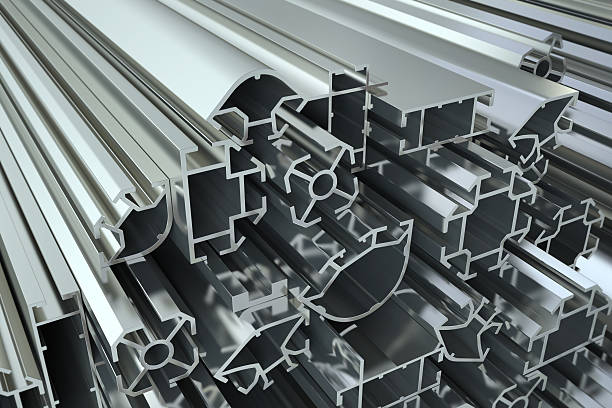Aluminium profile has become a fundamental material in modern construction due to its unmatched versatility and strength-to-weight ratio. It offers excellent resistance to corrosion, which is crucial for buildings exposed to harsh weather conditions. Unlike steel or wood, aluminium doesn’t rust or degrade over time, making it an optimal solution for long-term structural integrity.
Architects and engineers often choose aluminium profile for window frames, curtain walls, and roofing systems because of its sleek appearance and ease of customization. It can be extruded into countless shapes and sizes, providing design flexibility without compromising durability. Additionally, aluminium is fully recyclable, making it a sustainable material that aligns with eco-conscious construction practices.
In terms of installation, aluminium profiles are lightweight, reducing transportation costs and enabling quicker assembly. Whether for residential, commercial, or industrial buildings, aluminium profile helps streamline construction processes while enhancing structural aesthetics.
İçerik Başlıkları
Aluminium Profile in Interior Design and Industrial Applications
Beyond structural use, aluminium profile is increasingly popular in interior design and industrial environments. In homes and offices, it’s commonly used for partition systems, sliding doors, lighting fixtures, and decorative accents. Its modern, minimalistic look blends well with contemporary styles and adds a professional finish to interiors.
Industrially, aluminium profile plays a vital role in creating machine frames, workstations, and conveyor systems. Its modularity allows easy modification, expansion, or customization based on changing production needs. Additionally, its strength and resilience make it suitable for high-load applications without compromising safety or performance.
Another key advantage is that aluminium profile requires minimal maintenance. Unlike materials that need regular painting or sealing, aluminium retains its appearance with simple cleaning. This reduces long-term operational costs for businesses and homeowners alike.
Thanks to anodizing and powder coating techniques, aluminium profiles can come in a wide range of colors and finishes. This allows designers and manufacturers to match aesthetics with functionality, further broadening the scope of aluminium profile usage across various industries.
How to Choose the Right Aluminium Profile for Your Project
Selecting the appropriate aluminium profile depends on several factors including load requirements, environmental exposure, and design preferences. Start by identifying whether the application is structural, decorative, or functional. Profiles for load-bearing frameworks should have higher tensile strength and thicker walls, while decorative ones can be thinner and more flexible.
Consulting with a reliable supplier is essential to ensure you get profiles with precise dimensions and finishing. Some suppliers also offer custom extrusions to meet specific project needs. In architectural applications, thermal break aluminum profile is recommended for energy efficiency and insulation.
Before purchasing, always verify the alloy grade and manufacturing standards. High-quality aluminium profiles ensure safety, performance, and longevity. Whether you’re building a high-rise tower or a simple shelving unit, using the right aluminum profile can significantly improve your project’s outcome.
Custom Aluminium Profile for Specialized Applications
Every industry has its unique requirements, and custom aluminium profile offers tailored solutions. Through precision extrusion techniques, manufacturers can produce profiles in almost any shape or size, catering to the specific structural, functional, or aesthetic needs of a project.
In the transportation sector, lightweight custom aluminum profiles help improve fuel efficiency while maintaining strength in vehicle frames. In the electronics industry, heat sinks made from aluminum profile improve cooling and energy management. In aerospace, profiles are engineered to meet strict weight and safety standards.
Even in art and sculpture, aluminium profile offers modern artists a flexible yet sturdy medium for expression. The ability to anodize or powder coat in various finishes opens up countless creative possibilities.
Working with a skilled supplier ensures you receive high-quality, dimensionally accurate custom aluminum profile that meets local standards and project specifications. With the right design, it’s possible to enhance both the functionality and aesthetic value of any installation.
Contact Us
As Okyanus Aluminium, we continue our production with our extrusion, molding, powder coating, anodizing, mechanical processing, quality control and logistics departments. In our aluminum profile product range, standard aluminum profiles, aldox joinery profiles, C60 profiles, 55 system series profiles, aluminum handrail profiles, aluminum glass balcony profiles, insulated glass sliding profiles, aluminum guillotine system profiles, aluminum fly screen profiles, aluminum shutter and shutter profiles , aluminum office partition system profiles, aluminum awning profiles, shower cabin profiles, aluminum furniture profiles, accessory profiles, oval series profiles, libya door and window profiles, skirting and dilatation profiles. Aluminum
Our aluminum architectural systems product range includes ALC56 heat insulated door and window system, FC50 curtain wall system and insulated glass sliding systems.
We offer our products to our customers, of whom we are solution partners, with the best service quality. To contact us, you can browse our contact page. You can contact Okyanus Aluminium by calling us at +90 212 886 16 56 or sending an e-mail to our info@okyanusalu.com e-mail address.
